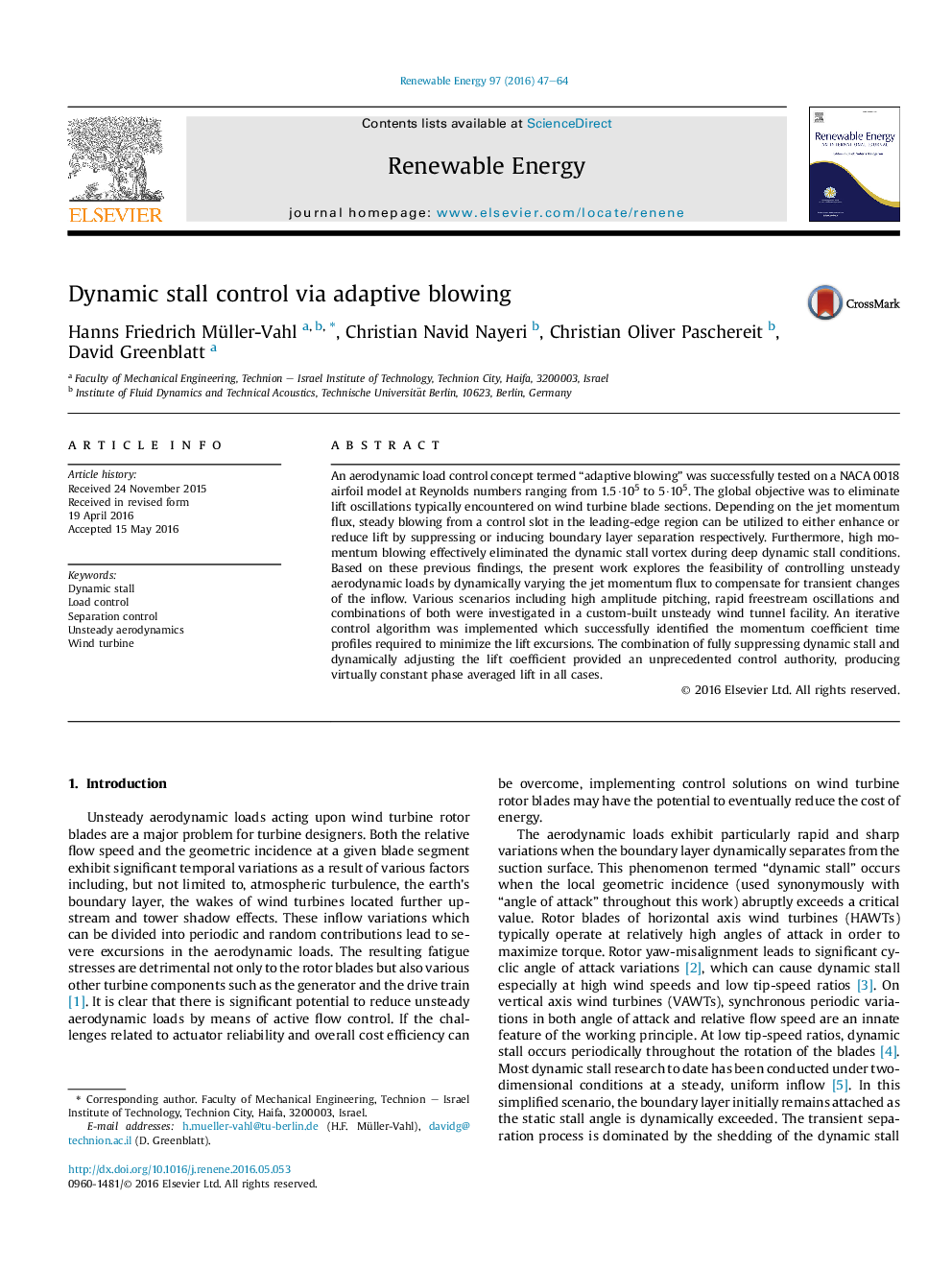| Article ID | Journal | Published Year | Pages | File Type |
|---|---|---|---|---|
| 6765488 | Renewable Energy | 2016 | 18 Pages |
Abstract
An aerodynamic load control concept termed “adaptive blowing” was successfully tested on a NACA 0018 airfoil model at Reynolds numbers ranging from 1.5·105 to 5·105. The global objective was to eliminate lift oscillations typically encountered on wind turbine blade sections. Depending on the jet momentum flux, steady blowing from a control slot in the leading-edge region can be utilized to either enhance or reduce lift by suppressing or inducing boundary layer separation respectively. Furthermore, high momentum blowing effectively eliminated the dynamic stall vortex during deep dynamic stall conditions. Based on these previous findings, the present work explores the feasibility of controlling unsteady aerodynamic loads by dynamically varying the jet momentum flux to compensate for transient changes of the inflow. Various scenarios including high amplitude pitching, rapid freestream oscillations and combinations of both were investigated in a custom-built unsteady wind tunnel facility. An iterative control algorithm was implemented which successfully identified the momentum coefficient time profiles required to minimize the lift excursions. The combination of fully suppressing dynamic stall and dynamically adjusting the lift coefficient provided an unprecedented control authority, producing virtually constant phase averaged lift in all cases.
Related Topics
Physical Sciences and Engineering
Energy
Renewable Energy, Sustainability and the Environment
Authors
Hanns Friedrich Müller-Vahl, Christian Navid Nayeri, Christian Oliver Paschereit, David Greenblatt,
